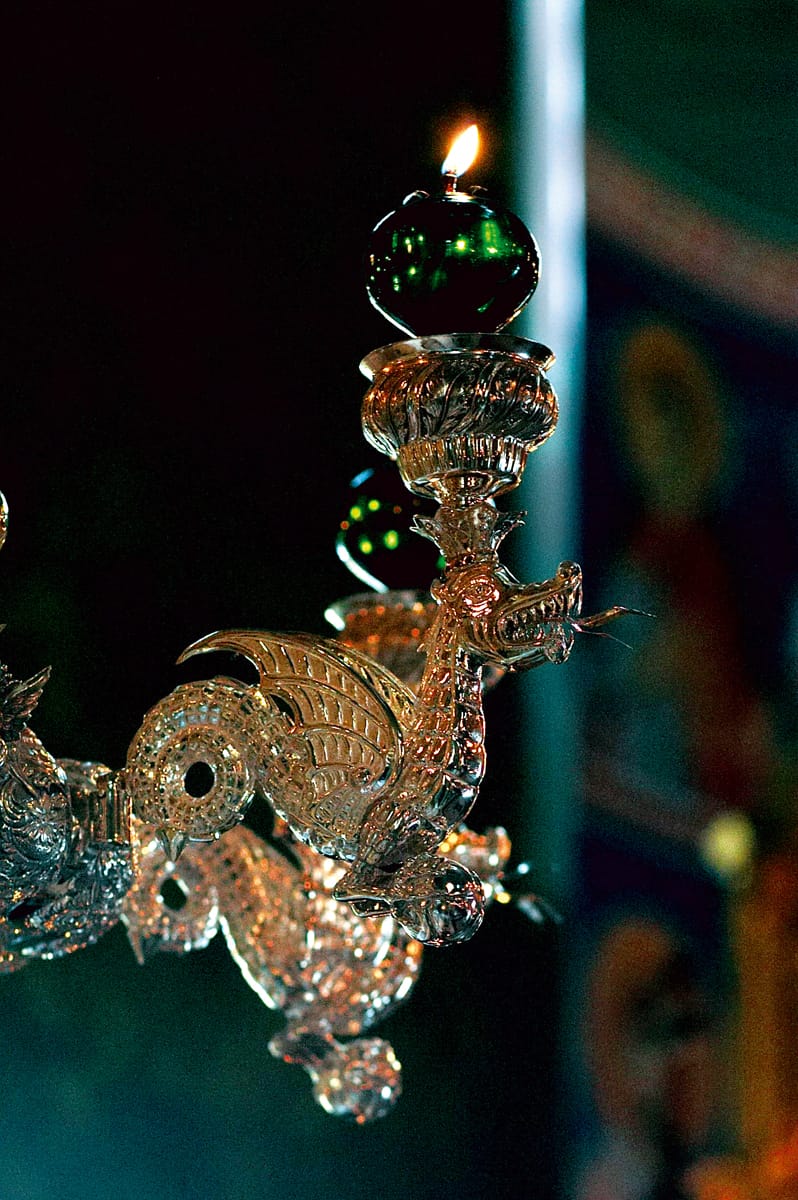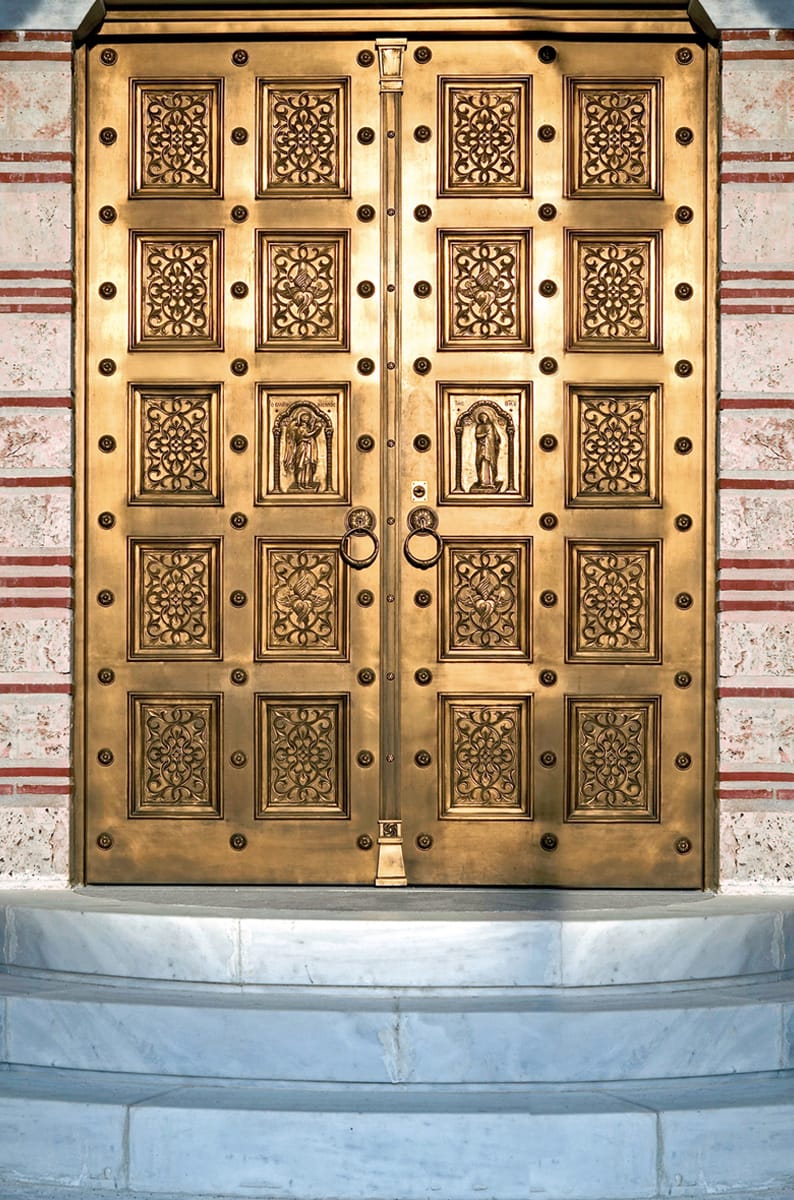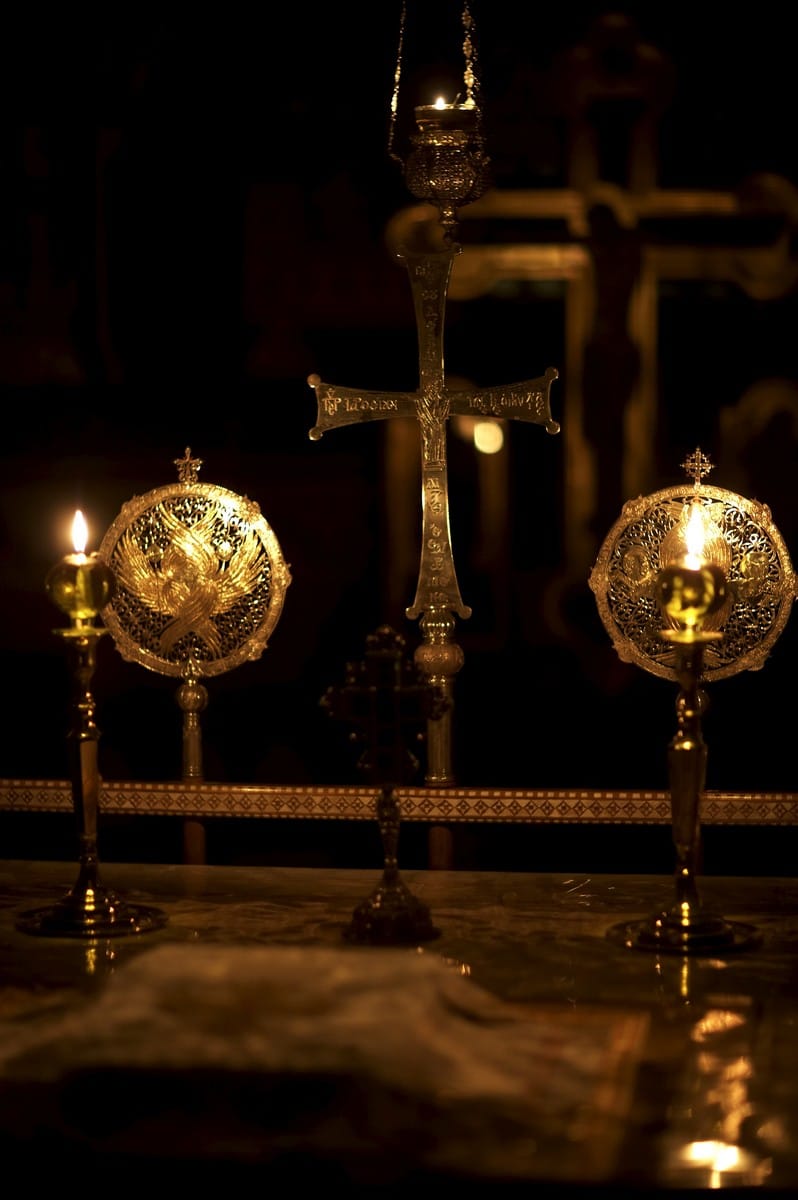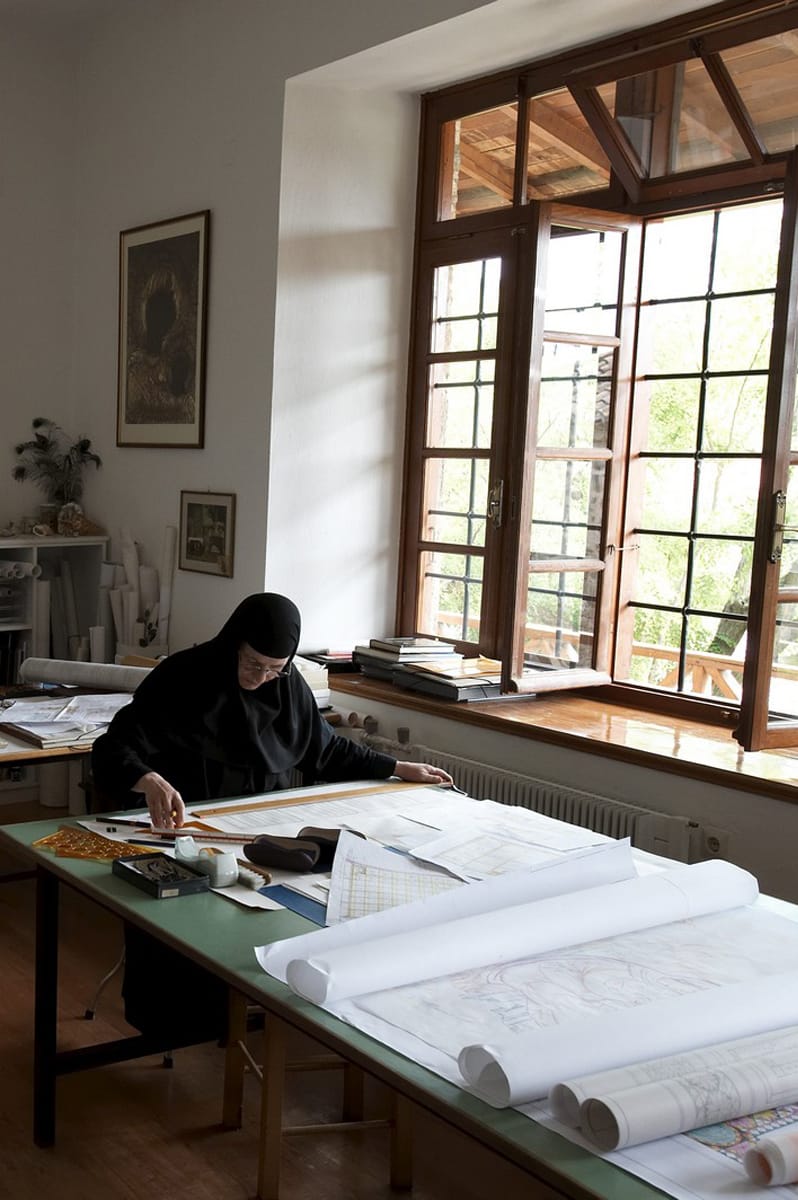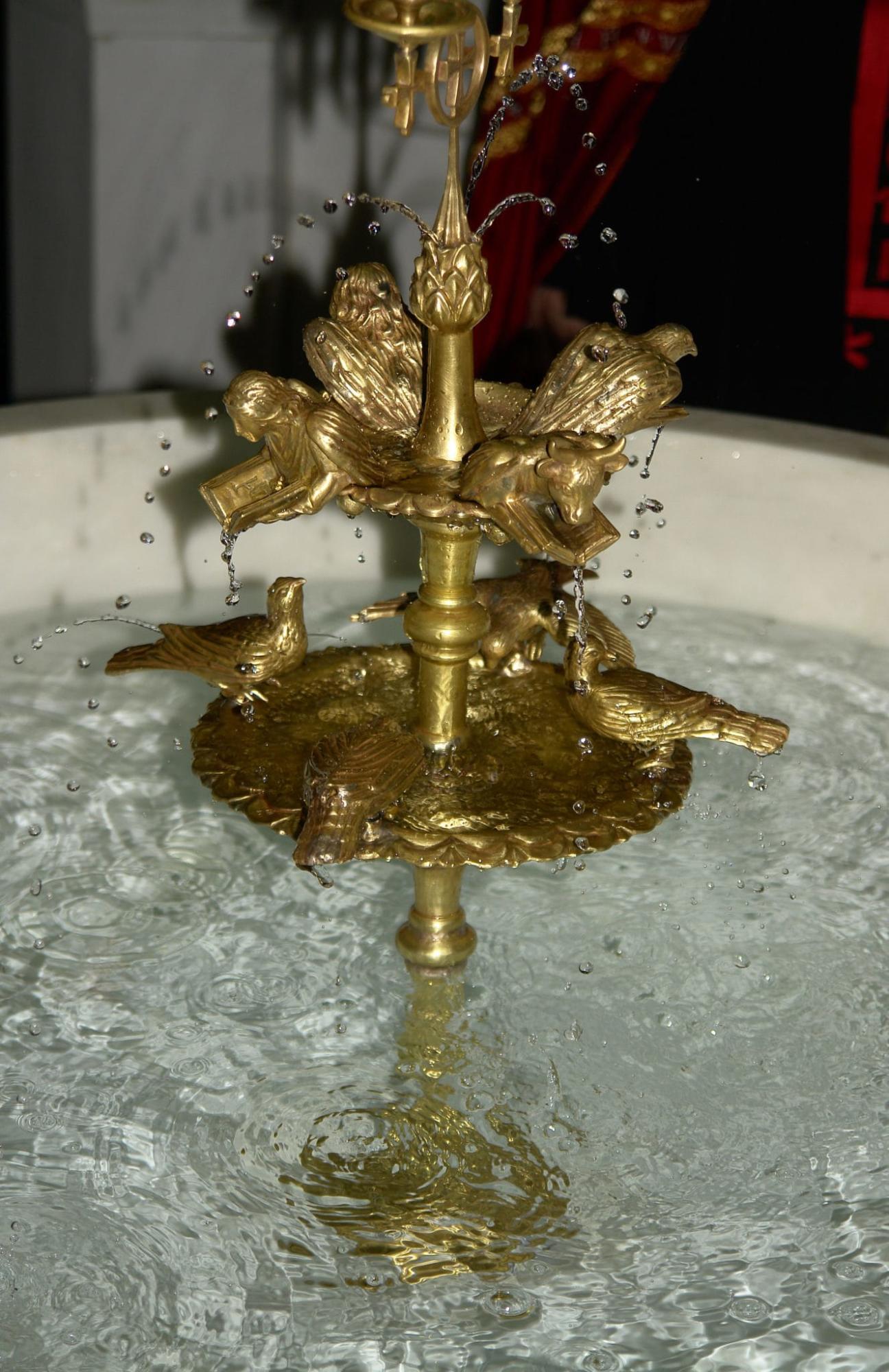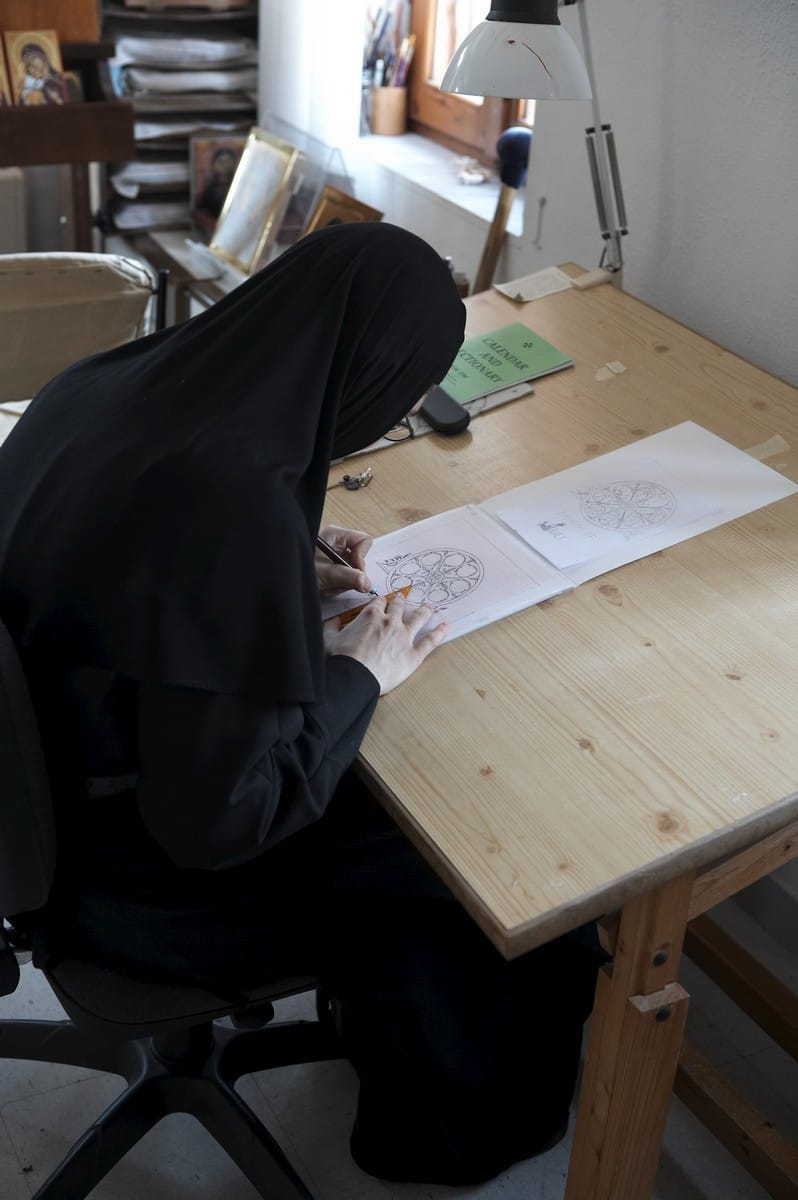Drawing Room
The Drawing Room could be called the launching pad of art and beauty, radiating in all workshop creations. It is exactly this common starting point that leads to the wonderful harmony and artistic homogeneity that runs through the Convent.
The century-long expression of ecclesiastical art and the wide range of artistic activities are a source of inspiration giving birth to a modern form of artistic expression, which preserves the ‘patina’ of the time past in works created with the freshness of the present.
The Drawing Room is where all patterns for embroidered and woven liturgical vestments come from (needlework room, loom room), as well as for furniture, wooden church adornments and wooden painted ceilings, and wood carving works; the most characteristic one among them is the gold-leaf wood-carved iconostasis of the Katholikon with the wood-carved door to the Trapeza [dining hall] of the sisterhood, which are examples of exceptional crafts(wo)manship.
This is where the famous Damascus furniture, inlaid with mother of pearl, ivory and turtle shell, were designed; the furniture was made in Syria by specialised craftsmen, in direct cooperation and under the continuous guidance of the sisters who work in the Drawing Room. The altar ciborium, the lectern stands for the choirs, the Despot Chair and the Father Superior’s ‘throne’, as well as the imposing interior doors of the Katholikon are excellent examples of such items.
The elaborate silver- and gold-ornamented utensils, such as the Chalice, the crosses, the six-winged angels, the relic cases, the votive lamps, the thuribles and the censers, as well as the impressive bronze fountain at the Phiale, are all designed by the team working in the Drawing Room. There are also similar but larger metalwork items, such as the heavy external bronze gate door of the Katholikon, adorned with a relief composition of the Annunciation, and the elaborate chandelier below the Pantocrator, with its grand bronze sphere suspended above the praying congregation, symbolising the sleepless eye of God who blesses the Earth with His hand. Around the chandelier, the choir of Saints, an accurate Athonite style copy, encloses the composition like a wreath, as on days of Great Feasts, the Saints depicted rotate around the chandelier in a joyful circular dance.
